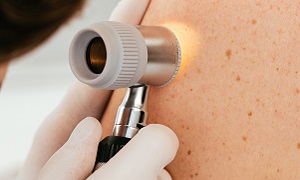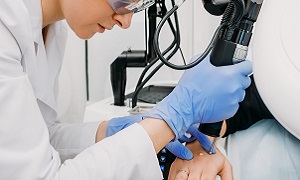Best Doctors in India for Cancerous Moles Treatment
Best Hospitals in India for Cancerous Moles Treatment
- City: Bengaluru, India
Hospital Highlights:
- Fortis Hospital Bannerghatta, Bengaluru was established in 2006.
- The hospital is a 276 bedded multi-specialty tertiary care facility.
- The hospital specializes in cutting-edge medical technology and dedicated patient care services.
- The hospital is equipped with state-of-the-art technologies like trans-radial angioplasty, trans-abdominal cardiac surgery, and computerized TKR navigation surgery.
- The hospital provides specialty medical services in cardiology, cardiac surgery, orthopedics, neurology, neuro-surgery, GI, and Minimal Access Surgery (MAS).
- City: Chennai, India
Hospital Highlights:
- Fortis Malar was established in 1992 and was formerly known as Malar Hospital.
- The hospital specializes in cutting-edge medical technology and dedicated patient care services.
- The hospital is multi-specialty, tertiary care facility with 180 beds.
- The hospital offers comprehensive medical care in specialties such as cardiology, cardio-thoracic surgery, neurology, neurosurgery, orthopedics, nephrology, gynecology, gastroenterology, urology, pediatrics, and diabetes.
- City: New Delhi, India
Hospital Highlights:
- Established in 1996, Pushpawati Singhania Research Institute is one of the top hospitals in the NCR region, as well as one of the top facilities in India for gastroenterology. The hospital is one of South Asia’s first institutes in medical and surgical treatment for diseases related to digestion.
- The hospital is equipped with state-of-the art facilities coupled with the latest equipment as well as renowned consultants from various parts of India as well as other parts of the world.
- City: New Delhi, India
Hospital Highlights:
- State-of-the-art technology and devoted healthcare professionals have been brought together under one roof at Venkateshwar Hospital to provide genuine medical care. The hospital’s professionals work together as a team to deliver the best possible treatment to their patients, using the most sophisticated equipment and information technology.
- Venkateshwar Hospital’s mission is to attain global excellence in healthcare by employing evidence-based, ethical clinical practices and cutting-edge technology by a team of highly skilled experts.
- City: New Delhi, India
Hospital Highlights:
- Sir Ganga Ram Hospital, New Delhi is known to provide the latest medical procedures with the latest technology in all of its units.
- The hospital has a team of reputed doctors, nurses, and healthcare professionals that ensure that patients receive quality care at affordable costs.
- Staffed with a team of highly qualified doctors, dedicated nurses, and paramedical and non-medical staff, the hospital aims to lead in healthcare delivery, medical education, training, and research.
- As per the vision of the founder, the hospital also provides free treatment to the economically weaker sections of society.
- Sir Ganga Ram Hospital also provides training to young doctors under the Diplomate in National Board(DNB) program. The DNB program at the hospital was started in 1984 and it is known for currently running the maximum number of DNB specialties in the country. It also has the distinction of having the first bone bank in India.
- City: Kerala, India
Hospital Highlights:
- Established in 2019, Apollo Adlux Hospital is the first Apollo Hospital in Kerala and the 73rd hospital owned by Apollo Group in India. With the state’s most advanced, comprehensive healthcare infrastructure and cutting-edge technologies, Apollo Adlux Hospital stands as an example of medical excellence in Kerala.
- With over 34 multi-specialty departments, the hospital believes in providing the best quality treatment to its patients at affordable rates, ensuring comfort at their difficult times.
- The 300-bed hospital is managed by a team of highly qualified and experienced experts who delivers exceptional hospitality to their patients and treats them with great compassion.
- With its affiliation with the Apollo Hospitals Group, the hospital aims in providing patients with top-notch healthcare services while also serving communities in Kerala.
- The hospital has good railway and road connections, and is conveniently close to Cochin International Airport.
- City: Gurugram, India
Hospital Highlights:
- Situated near DLF Cyber City, Gurugram, Narayana Superspecialty Hospital is one of the top medical facilities in the Delhi NCR region, catering to the needs of the people. Known for its commitment to quality medical care and patient service, the hospital is a state-of-the-art facility with planned and well-equipped sections, which includes a spacious OPD area as well as comfortable patient rooms.
- It is the closest super-specialty hospital from Indira Gandhi International Airport towards Gurugram, and also the nearest super specialty hospital from DLF Cyber City. It is also close to major residential areas in Gurugram.
- It is part of the renowned Narayana Health Group. Established in 2000, by Dr. Devi Shetty, a renowned cardiac surgeon, it has grown to be one fo India’s leading healthcare groups.
- City: Noida, India
Hospital Highlights:
- Fortis Hospital, Noida, stands as one of the oldest and most trusted healthcare institutions in the region, setting a benchmark for comprehensive medical care.
- As the second mega hub hospital in the Fortis Healthcare Group, Fortis Hospital, Noida, upholds a legacy of trust among more than 1.2 million patients. By integrating top-tier professionals with cutting-edge technology, the hospital delivers superior treatment across various medical disciplines.
- Specializing in advanced Neurosciences, Orthopedics, Kidney and Liver Transplant Programmes, Fortis Hospital, Noida has successfully performed over 1,500 transplants, solidifying its reputation as a leader in specialized medical interventions.
Cancerous Mole
Cancerous mole is typically a new mole or an existing one, which has gone through a few changes. A cancerous mole is also known to be the most common sign of melanoma of the skin. Every new or changing mole, however, is not cancerous, and therefore, it is better to keep track of the moles.
Melanoma is not the most common form of skin cancer, but it is known to be the most serious one. This is due to the fact that it can spread very fast to other parts of the body, and make treatment difficult and thus resulting in a poor outlook.
These moles may occur anywhere in one’s body, and the appearance can also vary in shape and size.
Getting an early diagnosis and receiving proper treatment as soon as possible, is important, and it can improve the outlook for people having melanoma. This is why proper vigilance is important as well as regularly checking the skin.
Symptoms
Identifying a cancerous mole in the early stages of melanoma can be a little difficult. Due to this reason, people should consider checking their skin regularly for signs of any change, such as a new mole or a change in the appearance of any existing moles.
If a person suspects that a mole might be cancerous, it is important for them to see their dermatologist for a proper diagnosis.
Some of the symptoms that you should be aware of include the following:
- Any changes to the skin, such as a new mole or a change in the color, size, and of an existing mole
- A mole that has a shiny, waxy, smooth, or pale appearance
- A firm, red lump that bleeds or appears crusty
- A mole that does not heal or becomes painful or tender
- A mole that gets itchy or starts to bleed
- A flat, red spot that can be rough, dry, or scaly
You can follow the ABCDE examination rule as well, to check for potentially cancerous moles. This rule describes five simple characteristics of early melanoma. These features include the following:
- Asymmetry: One half of a cancerous mole is generally likely to look different as compared to the other half.
- Border: The edges might be ragged, notched, or blurred rather than smooth.
- Color: They may contain uneven colors and shades, which can be black, brown, or tan. Some might even include white, pink, red, grey, or blue areas
- Diameter: Cancerous moles generally change in size, and usually grow larger. If a mole gets larger than 6 millimeters, it might be cancerous.
- Evolving: A change in the appearance of a mole over weeks or months can also indicate that it is cancerous.
You may also want to remember that only around 20-30% percent of melanoma cases arise from a pre-existing mole. The majority presents as a new mole.
Causes
Scientists are still trying to understand the exact cause of cancerous moles. The most common reason is believed to a combination of genetic and environmental factors.
Excessive exposure to UV light is known to be the most common cause of cancerous moles. The main source of UV light is sunlight, as well as artificial sources of light, which includes tanning beds, as well as other gadgets that produce UV light.
People who have atypical mole syndrome are usually at high risk of developing this condition. The syndrome is associated with the following three characteristics:
- More than a hundred moles
- One or more moles that are 8mm or larger in diameter
- Multiple cancerous moles
Diagnosis
You should be able to detect the symptoms of a cancerous mole by using the ABCDE rule and regularly examining your skin for any new and existing moles.
People should also try to check all the areas of their skin, which includes their back and other areas which might be difficult to see without any assistance. You can use a mirror or your phone camera, or ask a friend or family member to check it for you.
If you are having concerns or worries about a mole, then you should see a dermatologist, who can use microscopic or photographic tools in order to examine a mole in more detail. Dermatologists are specially trained to identify abnormal moles as well as melanomas. However, even with their years of training, sometimes this can prove to be difficult.
If your dermatologist suspects a cancerous mole, he/she might order a biopsy. This procedure involves a healthcare professional taking a sample of a mole and sending it to the laboratory for examination.
Treatment
Treatment for a cancerous mole is mostly the same as other cancers. However, unlike cancers of the internal organs, it will be easier to assess the cancerous tissue and remove the mole using surgery. Surgery is therefore the most common treatment option for most cancerous moles.
The procedure generally involves removing the mole along with some of the surrounding non-cancerous tissue around it. In certain cases, when a person has received an early diagnosis, surgery might be a sufficient remedy for treating the cancerous mole. If the mole covers a large area of the skin, a skin graft might also be required after the surgery.
Generally, a surgeon is ‘going to perform the excision while a person is under local anesthesia. This means that the person is conscious during the procedure, though they will not be feeling any pain, as the affected area will be numbed.
If there is any risk that your cancer has spread into your organs, blood, or your bones, then a doctor might perform a further examination, such as lymph node surgery, biopsy, radiologic studies, etc.
If your cancer has spread, then a doctor is going to perform a few other procedures which can include any of the following:
- Radiation Therapy
- Chemotherapy
- Targeted Therapy
- Immunotherapy












